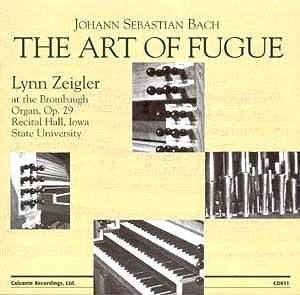 Johann Sebastian BACH (1685-1750) Organ Works
Johann Sebastian BACH (1685-1750) Organ Works
Fantasia and Fugue in G minor BWV 542
Fantasia in G major BWV 572
Chorale Prelude BWV 663
Prelude and Fugue in E minor BWV 533
Chorale Prelude BWV 653
Partita BWV 768
Rec: May 2001
DANACORD DACOCD 557 [58.16]
Hans Helmut Tillmanns, Weimbs organ of St. Nikolaus Church in Kall, Germany
In his third recording for Danacord, Hans Helmut Tillmanns presents a well-curated anthology of Bach’s organ works, utilizing the Weimbs organ housed in St. Nikolaus Church, Kall. This selection emphasizes the varied textures and emotional spectrum Bach so masterfully interwove throughout his compositions. Though the organ’s modern design lacks the resonant grandeur of its older counterparts, Tillmanns’ interpretations demonstrate a keen understanding of both the music and the instrument’s capabilities.
The disc opens with the Fantasia and Fugue in G minor BWV 542, a cornerstone of the organ repertoire. Tillmanns navigates the intricate counterpoint with clarity, particularly in the fugue’s expansive first subject, which he articulates with a lightness that breathes life into each entry. However, the lower pedal notes, meant to ground the powerful musical lines, seem somewhat attenuated, lacking the requisite gravitas that typically anchors this work. The result is a fugue that, while attractive in its translucent quality, occasionally feels unmoored. This interpretation contrasts with the more thunderous registrations found in recordings by the likes of Marie-Claire Alain, where the foundational bass lines resonate with an almost tectonic force.
Tillmanns’ choice of repertoire culminates in the Partita BWV 768, a monumental set of variations that showcases Bach’s ingenuity and depth. Over the course of nearly twenty-one minutes, Tillmanns imbues each of the eleven variations with distinct character, a testament to his interpretative depth. In particular, the seventh variation, with its intricate interplay between the soprano and bass lines, is executed with an elegance that reveals the harmonic underpinnings of Bach’s thought process. Here, the subtleties of registration come to the forefront, as the organ’s timbre shifts from muted delicacy to vibrant exuberance, mirroring the emotional arc of the work itself.
The Chorale Preludes, such as BWV 663, Allein Gott in der Höh sei Ehr, are particularly effective on this instrument, benefiting from its warm tonal color. Tillmanns adopts a contemplative demeanor in these meditative pieces, allowing the melodic lines to unfold with a serene fluidity that is both reflective and reverent. This stands in stark contrast to the more dramatic interpretations often favored by other organists, such as L’organiste du Roi, whose performances can verge on the bombastic.
Recording quality plays a crucial role in the overall listening experience. The acoustics of St. Nikolaus Church, while perhaps limited in resonance, afford a clarity that allows the intricacies of Bach’s counterpoint to emerge unimpeded. The engineering captures the organ’s voice authentically, though one cannot help but yearn for a more enveloping acoustic environment that older churches typically provide. This is particularly apparent in the more massive works, where a greater sense of space would enhance the dramatic impact.
Historically, the works included in this recording span Bach’s career, reflecting a composer at the zenith of his artistic powers. The Fantasia in G major BWV 572, for instance, showcases Bach’s innovative approach to form and structure, presenting a free-flowing exploration that contrasts with the more tightly woven fugues. Tillmanns’ interpretation, while perhaps less audacious than some, reveals the work’s inherent beauty through its lyrical phrasing and sensitive dynamic shading.
In conclusion, Hans Helmut Tillmanns’ recording of Bach’s organ works offers a thoughtful and nuanced exploration of these seminal compositions. While the organ’s modernity imposes certain limitations on the grandeur typically associated with Bach’s music, Tillmanns compensates with articulate and refined interpretations that highlight the composer’s lyrical and contrapuntal genius. This disc ultimately serves as a commendable addition to the catalog for those who appreciate a more understated approach to Bach’s organ repertoire, inviting listeners into a world of subtle textures and profound beauty.


![Bach’s Sacred Works: A Captivating Exploration by [ Performer Name ]](https://classicalguy.com/wp-content/uploads/2024/11/cover-339.jpg)
